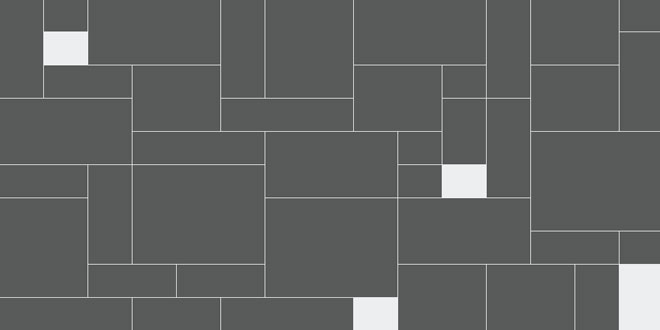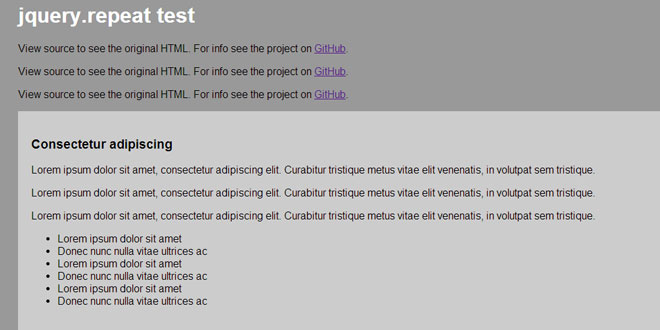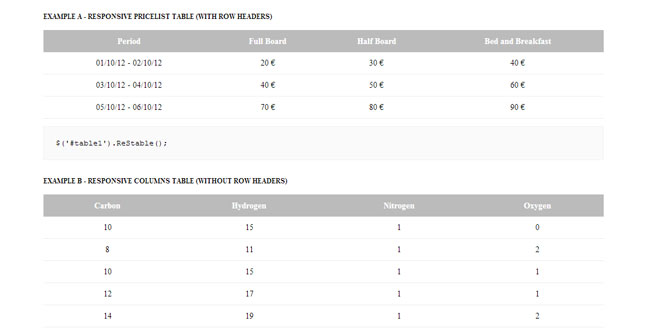User Rating: 3.9/5 ( 1 votes)
Freetile is a plugin for jQuery that enables the organization of webpage content in an efficient, dynamic and responsive layout. It can be applied to a container element and it will attempt to arrange it's children in a layout that makes optimal use of screen space, by "packing" them in a tight arrangement. Freetile has been the layout engine behind Assemblage and Assemblage Plus for almost two years, and now it becomes available as an independent Open Source project.
Features
Freetile is inspired by similar, existing efforts such as Masonry, vGrid and Wookmark. However, it differs from these solutions in some aspects:
-
It allows for any size of elements to be packed without using a fixed-size column grid, so you don't have to worry about specifying a column width appropriate to the size of your elements.
-
The algorithm that evaluates each possible insertion position is easily customizable, allowing for different preferences to be expressed, e.g. a preference to left- or right-alignment of elements, or proximity between certain elements.
Additionally, Freetile has the following key features:
-
A smart animation routine allows distinguishing between elements that is meaningful to be animated and ones that are not (e.g. elements that have been just added to the arrangement, or those that are not visible). Special classes allow for explicitly limiting animation to select elements.
-
It has been battle-tested through it's use in the many hundreds sites that make use of the Assemblage andAssemblage Plus templates.
Source: yconst.com
1. INCLUDE JS FILES
<script type="text/javascript" src="js/jquery.min.js"></script>
<script type="text/javascript" src="jquery.freetile.js"></script>
2. HTML
<div id="container">
<div></div>
<div></div>
<div></div>
<div></div>
<div></div>
</div>
3. JAVASCRIPT
$('#container').freetile();
4. OPTIONS
selector: Elements matching the selector will be tiled, others will be ignored.
animate: Should elements be animated? Animation will occur for elements that have been already placed and are visible, i.e. elements that are about to appear or are invisible will not be animated (but will still be tiled). Furthermore, elements with both their starting and ending position outside the window area will not be animated. Default: false
elementDelay: A delay may be inserted between each element's animation start, resulting in more appealing animations. Units in ms. Default: 0
containerResize: Should the content be re-tiled on window resize? Default: true
containerAnimate: Should the container of the elements be animated, as its size changes? Useful if the placement of surrounding content depends on the container size. Default: false
customEvents: One or more custom events to trigger re-tiling.
loadCheckSelector: Freetile will make sure that images of elements matching this selector are loaded (using ImagesLoaded). Useful to exclude elements if inline dimension styles are being applied to e.g. images. Default: :not(.ignore-load-check)
callback: A callback function to be called when tiling is done. Please note that this includes the animation delay.
persistentCallback: Should the callback function be persistent or reset after next tiling (one-shot)? Useful for triggering common tasks at the end of the animation process. Default: false
5. EXAMPLES
Enable animation, with a per-element delay of 30ms:
$('#container').freetile({
animate: true,
elementDelay: 30
});
Specify a custom element selector:
$('#container').freetile({
selector: 'customSelector'
});
Specify a scoring function with a preference for left side placement:
$('#container').freetile({
scoreFunction: function(o) {
return -(o.TestedTop) * 8 - (o.TestedLeft);
}
});
Append some elements to an existing container:
$('#container').freetile({
contentToAppend: 'someSelector';
});
 JS Tutorial
JS Tutorial




